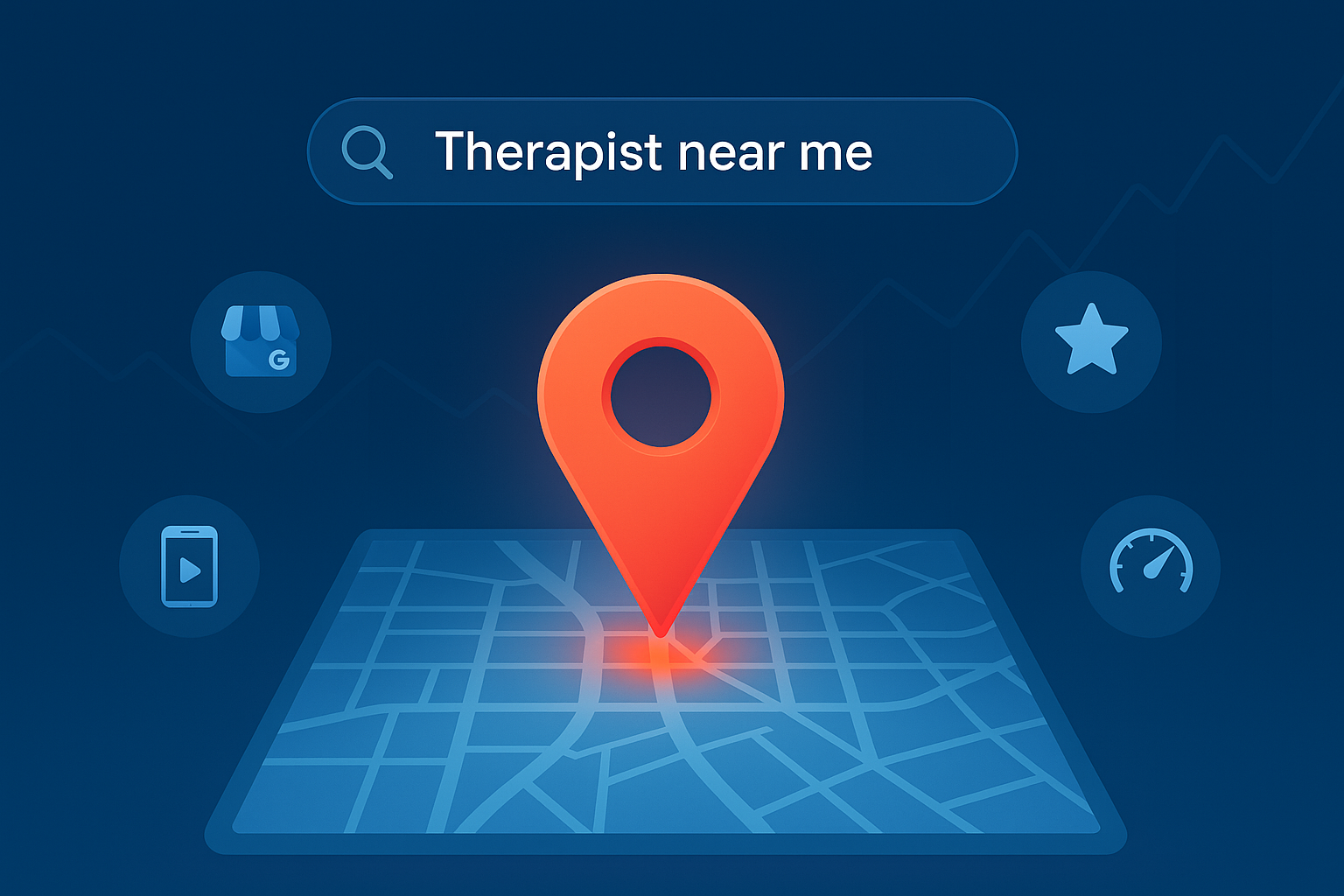The mental health field has evolved dramatically, with teletherapy emerging as a viable alternative to traditional in-person therapy. Both modalities offer unique advantages, but they also come with distinct challenges, making the choice between them a critical decision for therapists. Teletherapy vs. in-person therapy: Which one is right for your practice? explores the key differences, benefits, and drawbacks of each approach, helping you determine the best fit for your practice and clients. In this guide from Mental Health IT Solutions (MHIS), we’ll compare teletherapy and in-person therapy across several dimensions, offering insights to guide your decision-making process.
Understanding Teletherapy and In-Person Therapy
Before diving into the comparison, let’s define the two modalities and their roles in modern mental health care.
What Is Teletherapy?
Virtual Counseling Defined
Teletherapy involves delivering mental health services remotely via secure video conferencing, phone, or messaging platforms, such as TheraPlatform or SimplePractice. It’s often integrated with Electronic Health Record (EHR) systems for seamless documentation and scheduling.
The Rise of Teletherapy
Teletherapy has surged in popularity, with usage increasing significantly since 2020, as noted in The Rise of Teletherapy: How Virtual Counseling is Transforming Mental Health Care. It’s now a mainstream option for therapy, offering flexibility and accessibility.
What Is In-Person Therapy?
Traditional Face-to-Face Counseling
In-person therapy involves meeting clients in a physical office setting, allowing for direct interaction, observation of non-verbal cues, and a more traditional therapeutic experience.
The Established Standard
In-person therapy has long been the standard for mental health care, valued for its personal connection and ability to create a dedicated therapeutic space.
Comparing Teletherapy and In-Person Therapy
Let’s break down the key differences between teletherapy and in-person therapy across several dimensions, helping you evaluate teletherapy vs. in-person therapy: which one is right for your practice?
1. Accessibility and Reach
Teletherapy: Expanded Access
Teletherapy eliminates geographical barriers, allowing you to serve clients in remote or underserved areas. It’s ideal for clients with mobility issues or those who prefer the privacy of virtual sessions, reducing the stigma around seeking care.
In-Person Therapy: Limited Reach
In-person therapy requires clients to travel to your office, which can be a barrier for those in rural areas or with transportation challenges. However, it may appeal to clients who value a physical therapeutic space.
2. Client Comfort and Engagement
Teletherapy: Increased Comfort
Many clients feel more comfortable in their own environment, leading to greater openness during sessions. Teletherapy also offers secure messaging and client portals, enhancing engagement between sessions. For more on engagement, see The Role of EHR in Enhancing Patient Care and Therapy Outcomes.
In-Person Therapy: Stronger Rapport
In-person sessions allow for better observation of non-verbal cues, such as body language, which can deepen the therapeutic relationship, especially for new clients or those needing intensive support.
3. Therapist Efficiency and Workflow
Teletherapy: Streamlined Operations
Teletherapy platforms integrated with EHRs, like SimplePractice, automate scheduling, billing, and documentation, reducing administrative burdens. You can work from anywhere, saving on office costs. For more on efficiency, see How EHRs Help Mental Health Professionals Reduce Administrative Burden.
In-Person Therapy: Traditional Workflow
In-person therapy requires a physical office, which involves rent, utilities, and travel time, potentially increasing overhead. However, it may feel more structured for therapists accustomed to a traditional setting.
4. Privacy and Security
Teletherapy: Digital Security Needs
Teletherapy requires HIPAA-compliant platforms to protect client data, with risks of breaches if not properly secured. Therapists must ensure encryption and secure access. For more on security, see How to Secure Patient Data with an EHR for Mental Health Practices.
In-Person Therapy: Physical Privacy
In-person therapy offers a controlled environment where privacy is easier to manage, with fewer risks of digital breaches. However, clients may feel less private entering a therapy office in a public space.
5. Cost Considerations
Teletherapy: Cost-Effective for Both
Teletherapy reduces overhead for therapists (e.g., no office rent) and travel costs for clients. Integrated EHR platforms combine teletherapy and documentation, lowering subscription costs. For more on costs, see The Cost of Mental Health EHR Systems: What to Expect.
In-Person Therapy: Higher Overhead
Maintaining an office increases expenses, with average therapy office rent ranging from $500 to $2,000/month, depending on location. Clients also incur travel costs, which may deter some.
6. Technology and Connectivity
Teletherapy: Internet Dependency
Teletherapy relies on stable internet, and disruptions can interrupt sessions, especially in rural areas. Therapists need reliable platforms and backup plans, like phone sessions. For more on tech challenges, see Common EHR Challenges for Mental Health Therapists and How to Overcome Them.
In-Person Therapy: No Tech Barriers
In-person therapy avoids tech issues, ensuring uninterrupted sessions, but lacks the flexibility of virtual options, potentially limiting accessibility.
Benefits and Drawbacks of Each Approach
Teletherapy Benefits
- Accessibility: Reaches clients in remote areas or with mobility issues.
- Flexibility: Allows scheduling flexibility and work-from-home options.
- Efficiency: It integrates with EHRs for streamlined workflows. For more on integration, see Benefits of an Integrated EHR and Teletherapy Platform for Therapists.
Teletherapy Drawbacks
- Tech Challenges: Requires reliable internet and HIPAA-compliant platforms.
- Rapport Building: Harder to read non-verbal cues, potentially affecting connection.
In-Person Therapy Benefits
- Stronger Rapport: It is Easier to build trust through face-to-face interaction.
- Controlled Environment: A Dedicated space enhances focus and privacy.
In-Person Therapy Drawbacks
- Limited Reach: This excludes clients unable to travel to your office.
- Higher Costs: Office expenses increase overhead for therapists.
Which Is Right for Your Practice?
When to Choose Teletherapy
Best for Expanding Reach
If you want to serve clients in diverse locations or grow your practice without a physical office, teletherapy is ideal. It’s also suited for tech-savvy therapists comfortable with virtual tools.
Best for Flexible Practices
Teletherapy works well for practices prioritizing flexibility, such as those offering evening or weekend sessions, or for therapists balancing multiple roles.
When to Choose In-Person Therapy
Best for Intensive Cases
In-person therapy is often better for clients needing intensive support, such as those in crisis, where non-verbal cues are critical for assessment.
Best for Traditional Practices
If you and your clients value the traditional therapy experience and you have the budget for an office, in-person therapy may be the better fit.
The Hybrid Approach
Combining Both Modalities
Many therapists adopt a hybrid model, offering both teletherapy and in-person sessions to meet diverse client needs. This approach maximizes accessibility while maintaining the benefits of face-to-face interaction. EHRs with teletherapy integration make this seamless. For more on implementation, see How to Successfully Implement an EHR in Your Therapy Practice.
How to Transition to Teletherapy or a Hybrid Model
Choose the Right Tools
Select an EHR with integrated teletherapy, like TheraPlatform, ensuring HIPAA compliance and ease of use. For more on choosing an EHR, see Choosing the Best EHR for Your Therapy Practice: A Complete Guide.
Train Your Team
Educate yourself and your staff on teletherapy best practices, including managing virtual rapport and ensuring privacy, using vendor resources like SimplePractice’s tutorials.
Communicate with Clients
Inform clients about teletherapy options, explaining benefits like convenience, and guide them on accessing sessions through the client portal.
The Long-Term Impact on Your Practice
Deciding on teletherapy vs. in-person therapy: Which one is right for your practice? can shape your practice’s future. Teletherapy offers scalability and accessibility, while in-person therapy provides a traditional, rapport-focused experience. A hybrid model often provides the best of both worlds, allowing you to adapt to client needs and market trends. By choosing the right approach and leveraging technology, you can enhance client care, reduce overhead, and position your practice for long-term success in a digital age.
Final Thoughts
Teletherapy vs. in-person therapy: Which one is right for your practice? offers a framework for making an informed decision. Whether you choose teletherapy, in-person therapy, or a hybrid model, integrating the right EHR can streamline your operations and enhance care delivery. Partnering with Mental Health IT Solutions can help you navigate this transition.
Ready to explore why a specialized EHR is essential? Visit Why Private Practice Therapists Should Invest in a Mental Health EHR for more insights.







